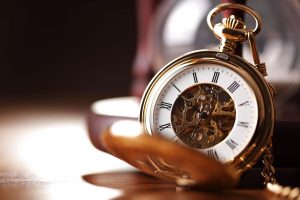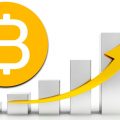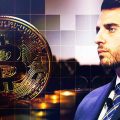The foundation of the most prominent economic theory, which over the past decades has supported the world's leadingpolitical regimes laid by mathematician JohnMaynard Keynes The ideas that he promoted and popularized are still in demand among academics and politicians, and his theory is almost the only one used in economic education.
However, as has been repeatedly noted, the theory presented by him in logical analysis reveals many flaws.
</p>This article is an Austrian economist andprogrammer Ben Kaufman focused on the assertion popularized by this theory that expenditures are the driving force behind economic growth, and undertook to prove logically that the opposite is true: the basic implicit requirement for economic growth is savings, while expenses, especially if they are artificially increased, contribute to economic stagnation. In this case, an integral concept of time will be applied, essentially ignored by the Keynesian school of thought.
Production and time
As a fundamental axiom, it must be recognized that all production processes(transformation of higher-order goods into first-order goods)require time, since without time no transformation, and therefore production, is impossible. An example of a production process is chopping wood or baking bread.

Images: Unsplash
It will be noted that such production processes are usually part of a much longer process. The baker must produce(or purchase from someone who produced)bread ingredients such as flour, which have a relatively long production process(which includes sowing and harvesting wheat and grinding it into flour).
You can also notice a correlation betweeneconomic development and an increase in the duration and complexity of production processes. For example, if in the past a lumberjack could use a relatively simple tool, such as an ax, today an electric saw is used, whose production process is much longer and more complicated than that of an ax, since you need an engine, a power source and various other details.
One can express the argument about time and production more formally using the quote:
“The actions of individuals are aimed at eliminatinginconvenience by allocating rare resources over time. To achieve the desired goal, you can use the available means. Actions are purposeful behavior that should solve problems. They necessarily occur in time. There is a preliminary subjective assessment of the possible results, after which actions are taken to use the funds necessary for the successful implementation of the plan. Time implies that something has changed, and since actions are changes, they involve time. Time is rare for a person, because when he decides to satisfy some needs, others inevitably remain unsatisfied. ”
Production incentive
Now let's start the analysis of Keynesian theoryspending, focusing on its rationale. Keynesian theory explains that spending contributes to economic growth, because rising costs mean rising demand, and since production depends on and comes from demand, rising demand contributes to higher production. It is argued that without sufficient costs, demand will be low, which will discourage people from hunting for production and cause an economic slowdown.

I want to focus now on the statement thatdemand stimulates production, since although this is generally true, in this formulation you can see a small inaccuracy, which we will now analyze. Demand for any product is a variable that is influenced by many factors, such as affordable supply, consumer preferences and population. Demand for goods is not guaranteed at all and is unlikely to remain constant during a given period due to the large number of possible changes that can affect it.
If we return to the production process, weshowed that some time must pass from its beginning to the final product. If we assume that production is truly a response to demand, then it is necessary to take into account that during the production process demand can(and probably will)hesitate. Thus, during the production process, "demand" can mean a range of possible demands.(from current demand to expected future demand at the end of production), and therefore it is necessary to clarify which onethe point on this “segment of demand” we mean. It should be obvious that only two options can be considered non-random: current demand and expected future demand at the end of the process(start and end of line). If we now consider which of these twopossible demand lies at the basis of the entrepreneur’s decision to start production, it is necessary to take into account that at the time of making the decision the product is not yet ready for sale or use, and therefore cannot satisfy the current demand for the final product. Since we cannot claim that the product(in this case, unprepared) is subject to demand, which it cannot satisfy, the option with current demand should be rejected.
Due to fluctuations in demand during production, wemust conclude that the decision to start the production process is not based on current demand, but on future demand expected after a certain period, namely the period between the beginning and end of production. In other words, we can logically conclude that the production of any goods should not be a reaction to the current demand, but to the future demand that the manufacturer expects at the end of the production process. Consequently, the statement at the beginning of this section can be reformulated more precisely, saying that the future demand expected by the producer at the end of production is the stimulus for production.
For example, a farmer sows wheat today not becausecurrent demand for bread, but because he expects a certain demand for it at the end of the production process, when he offers it to the market. Even if such an expectation is implicit, especially in an economy with such a progressive division of labor as today's, it still exists. This must be so because, other things being equal, if the actual demand for a product at the end of production is below a certain level, then the manufacturer will suffer losses(or make a profit lower than expected). So if he doesn't expect(albeit implicitly)that demand at the end of the production process will exceed a certain level(below which he will incur losses), then he will not start production. If the farmer started production, it means, like any other producer, he should have certain expectations regarding the future demand for the product.
The path to economic development
Now let's pause for a moment to focus on what it means"economic development". In simple terms, then economic development (progress) is an improvement in people's ability to satisfy their needs.
Perhaps the unique human quality to which the most significant influence on economic progress can be attributed is the production of goods of the highest order(those that are not intended for consumption, but for the production of consumer goods - first-order goods). The larger and more perfect the stocks of higher-order goods available to people, the more they will be able to produce and the better they will be able to satisfy their future needs.
Moreover, as already noted, the duration of the complete production process, the quantity of goods used in it and its overall complexity, as a rule, grow with the progress of civilization.
Thus, it can be argued that the path toeconomic progress may require an increase in stocks and a variety of higher-order goods available for production, which improves the production process. Improving production will increase the supply of consumer goods in the future, which will allow people to better meet their needs.
Costs and Economic Growth
Now we can begin to analyze the theory thatthat spending stimulates production and therefore leads to economic growth. The problem with this theory is that, despite its persuasiveness, it does not take into account the dimension of time in economics(in this case we are talking about the separation of current and future demand), which, with an adequate approach, leads to completely different conclusions.

To believe that spending leads to economic growth is to believe that improved productivity(mainly due to the production of goods of the highest order)representing the main formeconomic growth is the result of current demand, rather than the expected future demand for consumer goods. However, since we have shown that manufacturers, when deciding on the start of the production process, rely not on current demand, but on expected future demand, we can say with confidence that this is not so.
Now we can conclude that economicdevelopment is based on the improvement and expansion of production, which is driven not by current demand, but by the expectation of future demand. This conclusion indicates that the hypothesis that increased spending leads to economic growth cannot be accurate, since it ignores the fact that current demand is different from expected future demand and has a different economic meaning.
Next, you need to try to understand how costs affect economic growth, taking into account the correct wording that costs lead to an increase in current demand.
Costs mean people’s preferencedirect resources to the current production and distribution of consumer goods that can be purchased and consumed in the present. Such a preference for current consumption arises instead of and due to the preference for the production of higher-order goods.
The difference between these preferences is that,while the former cannot contribute to economic growth, since consumer goods cannot be used to produce future goods that will satisfy future demand, the latter can help improve the production of future goods, which is the essence of economic growth. In other words, the first is the preference for consumption and, therefore, the depletion of existing resources, while the second is the preference for improved production of future goods and, therefore, better satisfaction of future needs.
From the foregoing, it can be concluded that an increase in spending leads to an increase in current demand, which contributes not to economic progress, but to stagnation and depletion of resources.
Savings and Economic Growth
Now it would be appropriate to find out whatpromotes economic development, and it is not surprising that the answer is the opposite of spending: saving. As the opposite of spending, saving was demonized by Keynesian theorists as holding back potential spending.(which, according to their theory, can stimulate economic growth), reducing current demand(and, as a result, prices)and therefore reducing incentives forproduction. However, as stated above, production is driven not by current demand, but by expected future demand. So it's worth putting this argument against saving aside and examining its real economic impact.
Saving signals a higher demand for future goods than the need for current goods(people save money for future use). Thus, savings increase expectationsfuture demand and, accordingly, stimulate production and contribute to the investment of resources in the improvement of production processes and the development of production of goods of higher order.
In other words, savings represent a phenomenonwhen people set aside consumption and save money so they can use it later. Saving money for future use means that expectations for future demand must grow, which in turn should stimulate long-term production and economic growth.
According to the above analysis, one can describeThe economic distinction between costs and savings is as follows. Costs are the preference for satisfying current demand instead of the future, which is where more resources go. On the other hand, saving is the preference for satisfying future demand, which means that higher future demand is expected and, therefore, more resources are directed to the development of the production of goods, which will satisfy the higher expected future demand for consumption.
Temporary preference and economic growth

The concept of consumption time preferences discussed above(from the present to the very distant future)known as time preference.All other things being equal, a rational person will always prefer immediate satisfaction of needs over similar satisfaction in the future. Thus, people will delay satisfaction of needs only if future satisfaction is expected to exceed immediately available satisfaction by a certain amount, which they find sufficient compensation for the delay. In other words, they necessarily include delay in the price of satisfying needs. It is this subjective assessment of delay that determines the degree of time preference: the lower the relative value assigned to current satisfaction, the lower the degree of time preference, and vice versa.
You can determine the preference of the currentconsumption, expressed by costs, as a relatively high time preference, and deferred consumption and the preference for better satisfaction in the future, expressed by savings, as a relatively low time preference.
Since we know that the path to higher formscivilization inevitably requires lengthening production periods, it can be concluded that a decrease in temporal preference (our assessment of the present) means a greater willingness to plan for an increasingly distant future. Thus, a lower time preference improves production and promotes economic growth.
Economic importance
Before concluding, I would like to briefly outline what the above revised theory means for economics. Thomas Sowell defined the central problem of economics as“Distribution of rare resources with alternative uses”. Labor, capital and other resources are inevitably distributed in one way or another(not prohibited by law); the only question is how and where do people direct these resources.
Spending leads to more referralsresources for the current and short-term production of lower-order goods and, consequently, to the withdrawal of resources from long-term processes of production of higher-order goods. Savings, on the other hand, does the opposite. When consumption expenditures fall, less cash flows and therefore more resources are available to the short-term production and distribution sectors of lower-order goods(and further investment from savings)available for long-term production processes.The increase in available resources, as already mentioned, will be accompanied by the expectation of higher future demand, facilitated by savings, which will further stimulate long-term production processes.
In the latter case, one can see a tendency togrowth and improvement, which, ultimately, will lead to a more abundant supply of goods than in the first case. The result of this abundance will be a gradual decrease in prices for goods, which will better meet the needs of each person. This will reduce the need for present-oriented behavior, as more complete satisfaction of current needs will make them less important and will allow focusing on further improvement of production.
A continuous process of cost reduction, which leads to an increase in the supply of goods, which reduces prices and allows increased consumption and further reduction of costs without reducing(and potentially increasing)standard of living is the progress of civilization.
The conclusion from the foregoing is simple: high costs contribute to economic stagnation, while savings contribute to the improvement of production processes and, consequently, economic development. Obviously, the main flaw of the opposite theory developed by Keynes can be attributed to “neglect of time”, which led to a confusion of current demand with expected future demand. Time is an integral dimension of reality, which should be rigorously used in formulating economic theory.
</p>


